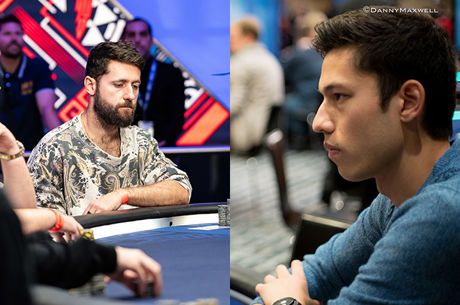Stud Poker Strategy - It Doesn't Look Good, But it Is

In my Veteran's Day column, I explained why many hands that might have looked superficially good really weren't. In today's and next week's column I turn that upside down — looking at hands that look initially like they should be tossed but which actually might warrant a call or a raise. See if you agree or disagree with my analysis. I'm right, but if you have a dispute please let me know.
It's a very tight $10/20 game. You have (As4d)4h). You see around you to the left the Jh, 8d, Qd, 2c, 9c, Qs, Kh. You know the players and are new to the game. They are, for the most part, regular, fairly tight players – though they will occasionally get out of line or try to use some deception. They aren't pros but they are at least fairly knowledgeable good players. You sit to the immediate left of the Kh. The 2c brings it in and the Qd, 8, and J all fold. The Kh completes to $10. He is a good player – who knows the odds and, plays the percentages. You have a lowly pair of 4s and are facing a raise from a King with an 8 and a Queen left to act. At first glance it looks like a bad hand – just a pair of 4s. But wait. It's absolutely worth a call.
The reason it's a good call is because you have a live pair of fours with a live overcard kicker to the King. There's a good chance that even if he's unlikely to normally steal antes, he might well be tempted by the combination of his position, his high card, and the generally tight nature of the game. Good players often try to steal in late position with the high card in a tight game. Even if he's not great, it's a good steal opportunity. Your pair may well be in the lead. But even if it's not and he has the Kings, with the live Ace kicker you are just a little bit behind. Combining the chance that he is bluffing with just a King high and your hand of a pair of fours with an overcard kicker and you have an obvious call. (It's roughly 45% for the 4s and 55% for the Kings. But if he's bluffing with just a King high then you're a favorite of almost 70% to 30%)
Here's another one. It's a very loose and passive $2/4 Stud game with a $.25 ante and a $1 bring in. You see 9d, Qd, 2h, Ad, Qd, Jh, Kh. You have (4s5c)7s and you follow the King, with the Jack next to act.. The 2c brings it in for $1.00 and everyone calls in front of you until the King who completes the bet to $2.00. Your action. A low 3-card gapped 3-straight looks pretty pathetic when facing a raise. But in this instance it's surely a playable hand and worth a call.
Remember, I said a loose passive game. I expect that even if the 9d and the Qd fold the other players will probably call. They already have half of the completion in (because of the somewhat aggressive structure of the antes and bring-in in this game). All of your cards are completely live — your 6, your 3, and your 8. You will probably get 6:1 pot odds for your $2.00 call of the King's raise. And your implied odds are also huge since you're likely to get callers all the way to the River even if you hit the perfect 6 on Fourth and then get a straight on Fifth, Sixth or Seventh. And you can easily fold if you miss your gut shot draw and there is any action on Fourth. There's also the chance that the King may slow down on Fourth if he didn't have his pair on third and thought the better of his poor attempt at a raise. There are some secondary factors that should get you to call. There are unlikely to be any flush draws out because of the unusual array of only two suits represented in the other exposed cards. You also have two to a flush — a microscopic improvement over three unsuited cards. Add all of these factors together and you have an obvious call.
These are relatively simple cases. In my next column I'll treat a more complicated one.









